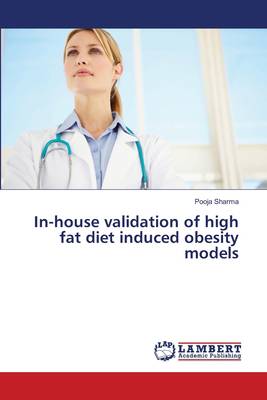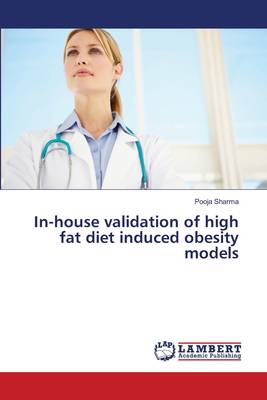
Je cadeautjes zeker op tijd in huis hebben voor de feestdagen? Kom langs in onze winkels en vind het perfecte geschenk!
- Afhalen na 1 uur in een winkel met voorraad
- Gratis thuislevering in België vanaf € 30
- Ruim aanbod met 7 miljoen producten
Je cadeautjes zeker op tijd in huis hebben voor de feestdagen? Kom langs in onze winkels en vind het perfecte geschenk!
- Afhalen na 1 uur in een winkel met voorraad
- Gratis thuislevering in België vanaf € 30
- Ruim aanbod met 7 miljoen producten
Zoeken
€ 63,45
+ 126 punten
Omschrijving
Obesity results from a prolonged imbalance between energy intake and energy expenditure, as depending on basal metabolic rate, heat production, thermogenic effects of the diet & physical activity. Diet-induced obesity in rodents can be achieved by different regimens & approaches. Diets providing a high fat intake have been established as a gold standard to generate obese rodent models and have proven to initiate pathologies similar to those in humans. However, this dietary treatment is far from being standardized and its relevance has been criticized. Hence, varieties of high fat diet regimens have been introduced by providing a choice of several palatable food items of variable composition. Further male rats have been considered in developing all types of obesity models and no rationale has been provided as of this discrimination and negligence of using female rats. Another pitfall in the obesity model development is that of the choice of the strain of the rats used for the study. The basis on which strain is being chosen still remains controversial. This present study aimed at comparing & validating different diet induced obesity models utilizing different strains and gender.
Specificaties
Betrokkenen
- Auteur(s):
- Uitgeverij:
Inhoud
- Aantal bladzijden:
- 108
- Taal:
- Engels
Eigenschappen
- Productcode (EAN):
- 9783659333958
- Verschijningsdatum:
- 3/02/2013
- Uitvoering:
- Paperback
- Afmetingen:
- 150 mm x 220 mm
- Gewicht:
- 168 g

Alleen bij Standaard Boekhandel
+ 126 punten op je klantenkaart van Standaard Boekhandel
Beoordelingen
We publiceren alleen reviews die voldoen aan de voorwaarden voor reviews. Bekijk onze voorwaarden voor reviews.









